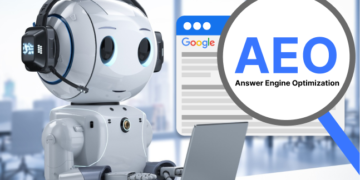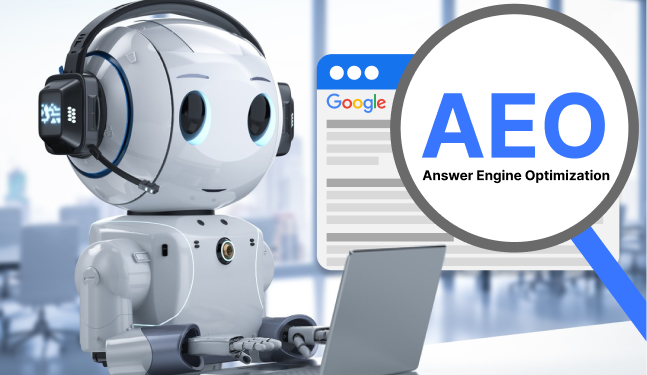In today’s digital landscape, the way users seek information has evolved significantly.
Traditional Search Engine Optimization (SEO) strategies, which focus on improving website visibility through keyword optimization and backlinks, are no longer sufficient to meet the demands of modern users.
With the rise of voice-activated assistants and AI-driven search tools, users now expect direct, concise answers to their queries. This shift has given birth to a new approach known as Answer Engine Optimization (AEO).
Understanding Answer Engine Optimization (AEO)
Answer Engine Optimization is a strategy designed to enhance a website’s visibility by providing direct answers to user queries.
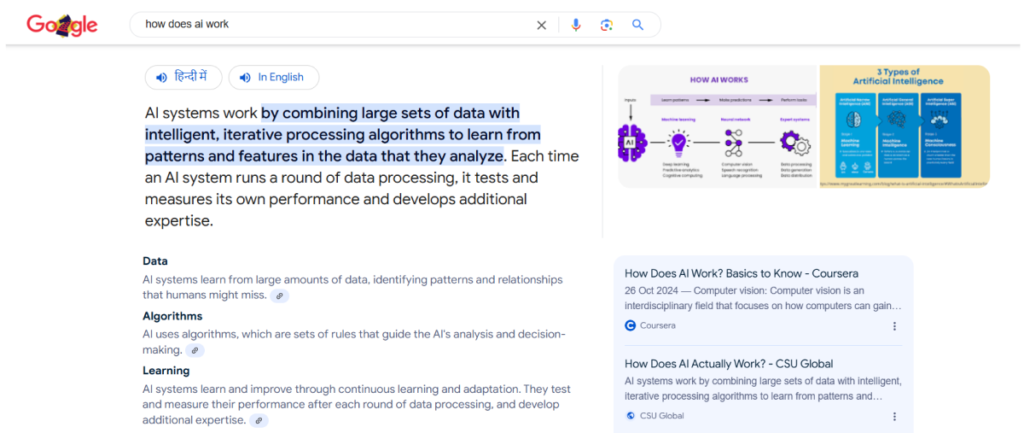
Unlike traditional SEO, which aims to improve rankings on search engine results pages (SERPs), AEO focuses on ensuring that content is structured and presented in a way that allows search engines and AI-powered assistants to easily extract and deliver precise answers to users.
This approach is particularly crucial in the context of voice searches, where users often pose specific questions and expect immediate responses.
The Imperative for Enterprises to Embrace AEO
The increasing prevalence of voice-activated devices and AI-driven search tools has transformed user behavior.
Users are moving away from typing fragmented keywords and are instead asking full, conversational questions.
For instance, instead of typing “best Italian restaurants,” a user might ask, “What are the top-rated Italian restaurants near me?” This change necessitates that enterprises SEO services adapt their digital strategies to meet these evolving expectations. By implementing AEO, businesses can:
- Enhance Visibility: By providing direct answers, businesses increase their chances of appearing in featured snippets or answer boxes, which are prominently displayed at the top of SERPs.
- Improve User Engagement: Delivering precise answers fosters trust and encourages users to engage more deeply with the brand.
- Stay Competitive: As more businesses adopt AEO, those that fail to do so risk falling behind in search visibility and user engagement.
AEO vs. Traditional SEO
While both AEO and traditional SEO aim to improve a website’s visibility, they differ in their approaches:
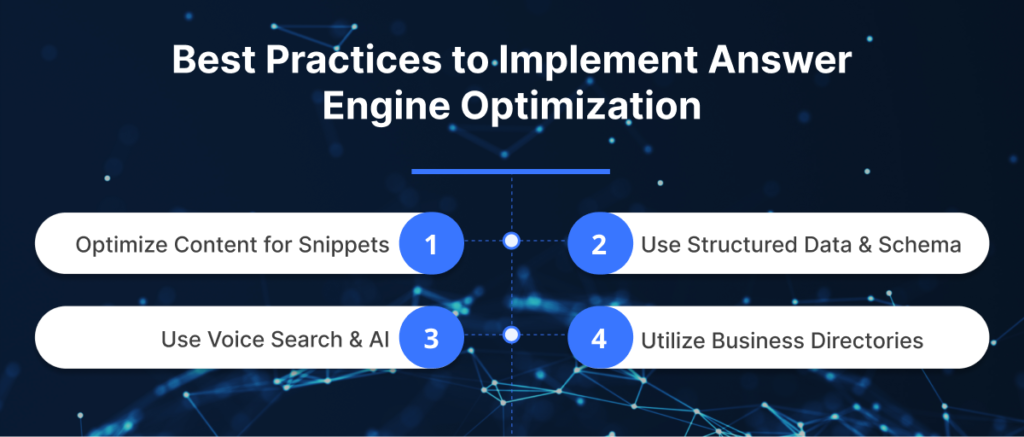
- Traditional SEO: Focuses on optimizing content with relevant keywords, building backlinks, and improving site structure to rank higher on SERPs.
- AEO: Centers on understanding user intent and structuring of content marketing to provide direct answers, facilitating easy extraction by search engines and AI assistants.
In essence, while traditional SEO drives users to a website, AEO aims to deliver the information users seek directly, often without requiring them to visit the site.
Implementing Answer Engine Optimization Strategies
To effectively implement AEO, enterprises should consider the following strategies:
- Understand User Intent: Analyze the types of questions your target audience is asking. Tools like Google’s “People Also Ask” feature can provide insights into common queries related to your industry.
- Create High-Quality, Structured Content: Develop content that directly answers user questions. Use clear headings, bullet points, and concise paragraphs to enhance readability. Incorporate relevant keywords naturally to align with search engine algorithms while ensuring the content remains engaging and easy to understand.
- Utilize Structured Data Markup: Implement schema markup to help search engines understand the context of your content. This includes elements such as FAQ schema, Q&A schema, and How-to schema, which can significantly increase your chances of ranking in answer boxes.
- Optimize for Voice Search: Since many users now use voice-activated devices, it’s essential to optimize content for voice queries. This involves targeting long-tail keywords, especially full questions, and providing succinct answers that can be easily read aloud by AI assistants.
- Leverage Business Directories: Ensure your business is listed on online directories like Google My Business, Yelp, and industry-specific platforms. AI generators often pull information from these directories when providing answers, so having accurate and up-to-date listings can improve your chances of being featured.
- Adopt a Mobile-First Design: With a significant number of searches conducted on mobile devices, ensure your website is mobile-friendly. A responsive design that adjusts to various screen sizes, fast loading times, and easy navigation are crucial factors that enhance user experience and improve search rankings.
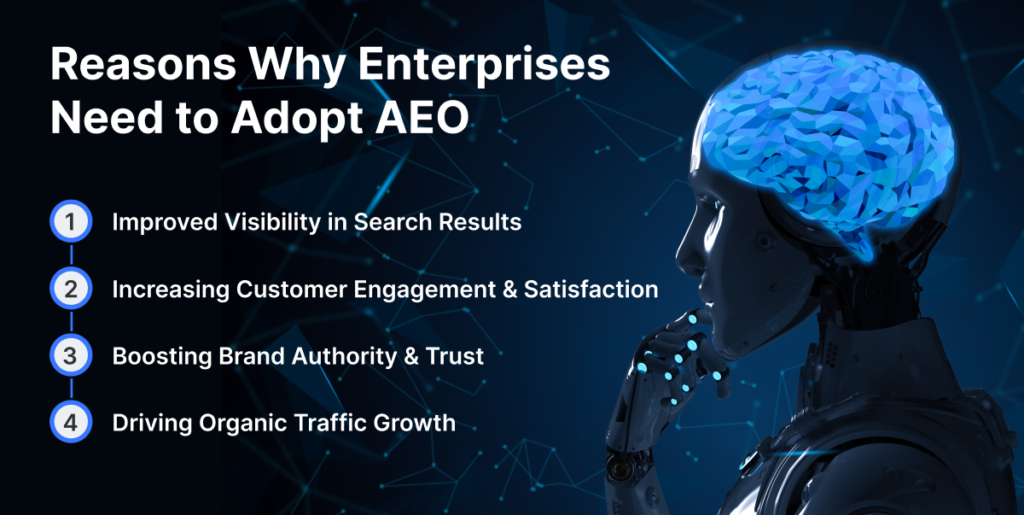
Conclusion
As the digital landscape continues to evolve, enterprises must adapt to changing user behaviors and technological advancements.
Answer Engine Optimization represents a pivotal shift from traditional SEO service practices, focusing on delivering direct, concise answers to user queries.
By embracing AEO strategies, businesses can enhance their visibility in AI-powered search results, improve user engagement, and maintain a competitive edge in the market.
For enterprises looking to navigate this transition, partnering with experts in digital marketing and AEO can provide the guidance and strategies necessary to succeed in this new era of search optimization.
